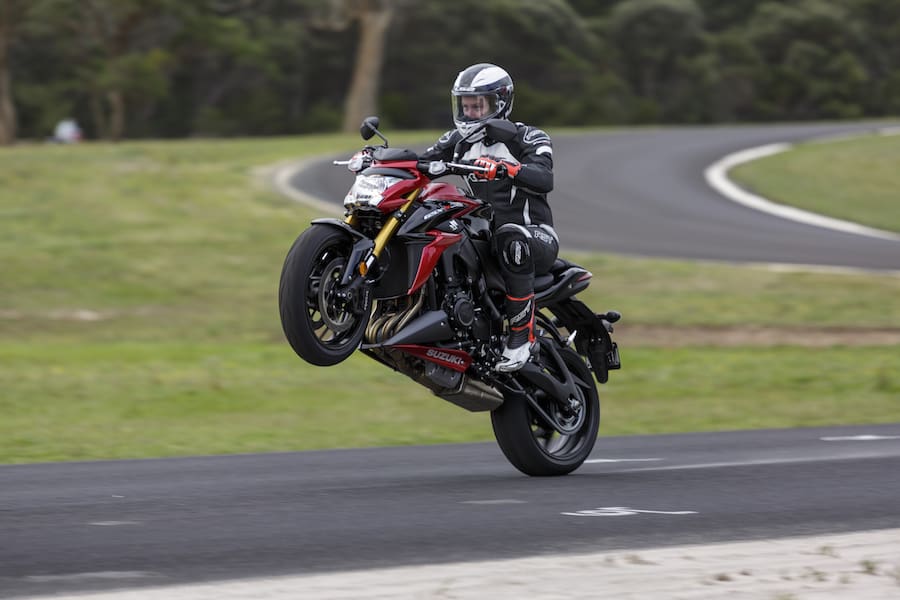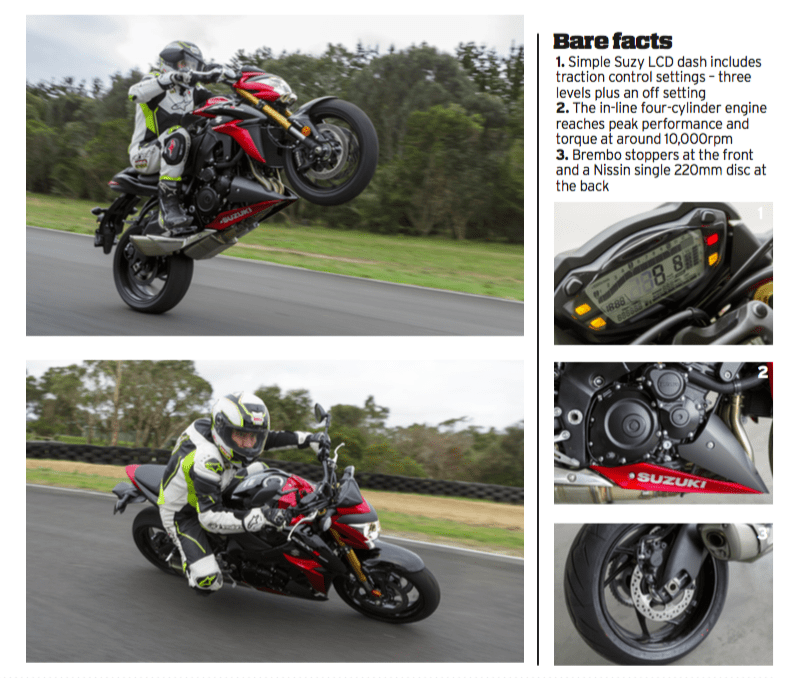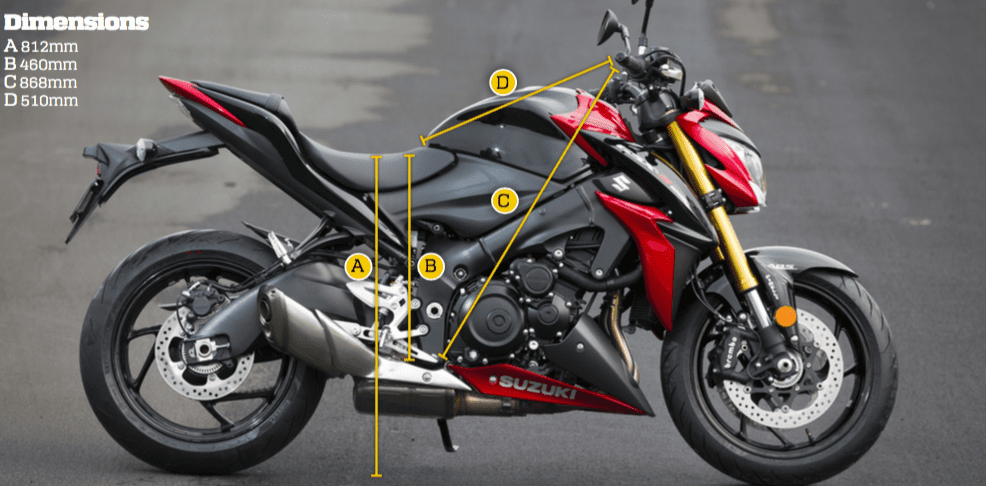The most striking attribute of Suzuki’s superbike-derived naked is undoubtedly its price. Three grand more will get you the next-least-expensive MT-10, after which you’ll need another two thousand-plus for the Trumpy or Beemer, and an extra 10 big ones or more for the big twins. The question is: if it’s that cheap, how good can it be? As good as a Gixxer Thou sans fairing fitted with a motocross style Renthal Fatbar, that’s how good!
Whenever a new model is thrust upon us with ever more power, cannier electronics, and shinier gold suspension, part of me is overjoyed. But part of me wonders whether it’s all entirely necessary.

Resolving my internal conflict allows me to draw the conclusion that it’s good to have choice, and a corresponding price range to make motorcycling accessible to as many folk as possible. The fact the GSX-S is the most affordable supernaked makes it a winner in my books. And as the bike with the lowest seat height, its accessibility extends even further than simply monetary terms.
Cutting straight to its shortcomings, the Suzuki has very poor fuelling from the initial crack of the throttle, and its suspension performance doesn’t match that of its more expensive competitors. The KYB shock and fork are more than up to the task of road riding, but their damping is too soft for track use and fades when worked hard. A suspension upgrade would fix this, and attending to the poor fuelling – perhaps with a trip to friendly Dave at Dynobike – would certainly improve the Suzuki’s throttle response. As to whether either of these shortcomings and added expenses rectifying them are a necessity for everyday street use, the simple answer is: not unless you’re very fussy.

Although the beauty of the Gixxess Thou is in its simplicity, value and samurai styling, it shouldn’t be overlooked that included in that bargain price you do also get an electronics package. As well as the traction control system working admirably well, it has the bonus of crackling out an exciting audible announcement which leaves no doubt of when it’s doing its job.
It’s worth remembering that the same basic engine design that is shared across the GSX range has just won the FIM Endurance World Championship for the 15th time, cementing the model line’s reputation as an ideal keeper. They’re built to suck up punishment, while delivering exhilarating performance.

With its tight turning circle – only bettered by the KTM – progressive brakes, neutral riding position and slim profile, the GSX-S has many traits that show their true worth in city traffic, making it the ideal super-commuter. King of the traffic light drags through the week, capable of carving it up on Sunday, and with a price that leaves plenty of change for fresh rubber, the Suzuki remains a very viable option.
Second Ops
Craig Coxhell – An easy-going bike with enough power to have a bit of fun, with a riding position that makes you feel like you are riding a comfortable lounge chair. Handles well and holds a nice line. The throttle response on this bike is bad to say the least, which is a shame as it’s great value for money.
Steve Martin– The two selling points is its sweet handling chassis and keen pricing, but I’d like to see more bottom-end mumbo and a smoother throttle connection. At highway speeds it’s a pleasure to ride, and it also has one of the sweetest gearboxes. If budget is an issue, buying the GSX-S and fixing its weaknesses is a real option.
Paul McCann – The GSX-S is $3K less than its closest priced rival on this test, but also out of its depth in terms of features, technology and performance. For my six-foot frame it was a little too squat to really gel with. Handling-wise it was typical Suzuki: stable, predictable and well balanced. As a road ride it’s hard to argue with the GSX motor’s reliability.













